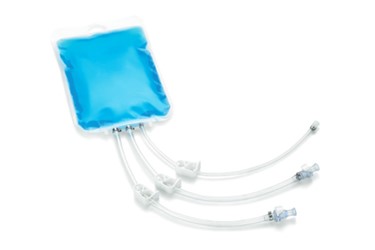Single-Use Fluoropolymer Bags For Efficient High-Density Cell Banking

The need for rapid development and scale-up of vaccines and therapeutics has never been greater. But conventional seed train processes used to amplify cells from cell cultures are inefficient and subject to risk. They start with relatively small quantities of cells, requiring weeks of processing and multiple transfer steps. Cell cultures are typically stored in vials ranging from 1 to 5 milliliters (mL) in size. The cells must remain healthy throughout the process of cold storage, thawing, amplification, and inoculating a bioreactor.
Conventional cell culture storage uses cylindrical cell cryopreservation containers accommodating between 12 and 18 vials. The containers are filled with isopropyl alcohol to control the freezing rate. Freezing cells in individual vials achieves the goals of maintaining cell viability after long-term cold storage, but it comes with some drawbacks. The typical seed train involves an open system of multiple manual steps to transfer cells from vials to successively larger flasks to bioreactors (Figure 1). Every time cells are transferred to a larger flask, there is a risk of contamination. Each batch requires a new seed culture, introducing risks of inconsistent cell quality between batches.
This multistep process is expensive and time-intensive, taking weeks to amplify the cell count to a high enough level to inoculate a production bioreactor. There is, therefore, a need for a more efficient, streamlined approach that will speed up the cell amplification process and reduce cost while maintaining high cell quality. Improving efficiency requires increasing the volume of media in cell cultures, the cell density, or both, and reducing the number of process steps.
Research on high-density cell banking has demonstrated its ability to increase the density in cell cultures from 10 million cells per mL up to 100 million cells per mL.1 This approach reduces the number of steps in the seed train, shrinking processing time from weeks down to days.2 By eliminating manual transfer steps, high-density cell banking minimizes contamination risk. Instead of storing frozen cell cultures in individual vials, high-density cell banking relies on larger vessels.
When replacing cell cryopreservation containers with another storage method, the cells must be protected throughout the freezing, storage, thawing, and transfer processes.
Single-use 2D storage bag assemblies made from fluoropolymers offer a solution that increases both cell culture volume and cell density per mL while preserving cell viability. This white paper explains how these bags perform during freezing, storage, and thawing steps and why they present an efficient alternative to vials in a variety of upstream cell banking applications.
Get unlimited access to:
Enter your credentials below to log in. Not yet a member of Cell & Gene? Subscribe today.
